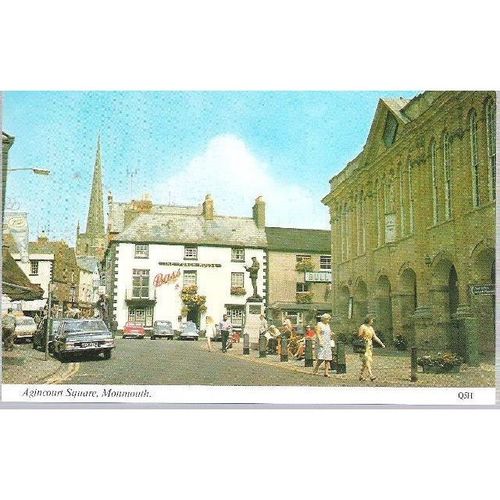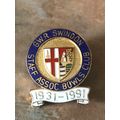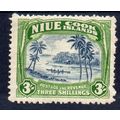Monmouth - Agincourt Square, Punch House pub, cars - Harvey Barton postcard 70s
- Condition : Used
- Dispatch : 2 Days
- Brand : None
- ID# : 136308656
- Quantity : 1 item
- Views : 671
- Location : United Kingdom

- Seller : justthebook (+1704)
- Barcode : None
- Start : Sun 11 Jan 2015 06:31:38 (EDT)
- Close : Run Until Sold
- Remain : Run Until Sold
Checks/Cheques
 for 1 item(s) edit
for 1 item(s) edit
Shipping Calculator
More Listings from This Seller view all
Seller's Description
- Postcard
- Picture / Image: Agincourt Square, Monmouth, Monmouthshire - shows old cars and The Punch House pub
- Publisher: Harvey Barton (Q5H)
- Postally used: no
- Stamp: n/a
- Postmark(s): n/a
- Sent to: n/a
- Notes / condition:
Please ask if you need any other information and I will do the best I can to answer.
Image may be low res for illustrative purposes - if you need a higher definition image then please contact me and I may be able to send one. No cards have been trimmed (unless stated).
------------------------------------------------
Postage & Packing:
Postage and packing charge should be showing for your location (contact if not sure).
No additional charges for more than one postcard. You can buy as many postcards from me as you like and you will just pay the fee above once. Please wait for combined invoice. (If buying postcards with other things such as books, please contact or wait for invoice before paying).
Payment Methods:
UK - PayPal, Cheque (from UK bank) or postal order
Outside UK: PayPal ONLY (unless otherwise stated) please. NO non-UK currency checks or money orders (sorry).
NOTE: All postcards are sent in brand new stiffened envelopes which I have bought for the task. These are specially made to protect postcards and you may be able to re-use them. In addition there are other costs to sending so the above charge is not just for the stamp!
I will give a full refund if you are not fully satisfied with the postcard.
----------------------------------------------
Text from the free encyclopedia WIKIPEDIA may appear below to give a little background information (internal links may not work) :
*************
Monmouth (/'m?nm??/ MON-m?th; Welsh: Trefynwy meaning ""town on the Monnow"") is a traditional county town in Monmouthshire, Wales. It is situated where the River Monnow meets the River Wye, within 2 miles (3.2 km) of the border with England. The town is 36 miles (58 km) north-east of Cardiff, and 127 miles (204 km) west of London. It is within the Monmouthshire local authority, and the parliamentary constituency of Monmouth. According to the 2001 census, its population was 8,877.
The town was the site of a small Roman fort, Blestium, and became established after the Normans built a castle here after 1067. Its mediaeval stone gated bridge is the only one of its type remaining in Britain. The castle later came into the possession of the House of Lancaster, and was the birthplace of King Henry V in 1387. In 1536, it became the county town of Monmouthshire.
Monmouth later became a tourist centre at the heart of the Wye Valley, as well as a market town. It now acts as a shopping and service centre, and as a focus of educational and cultural activities including Monmouth U3A, for its surrounding rural area, and is linked by the A40 road to the M4 motorway at Newport and the M50 at Ross-on-Wye.
The town was visited in 1802 by Admiral Horatio Nelson, who knew the importance of the area's woodland in providing timber for the British Navy and approved a Naval Temple built in his honour on the nearby Kymin Hill.[12] In 1840, at Monmouth's Shire Hall, Chartist protesters John Frost, Zephaniah Williams and William Jones became the last men in Britain to be sentenced to be hanged, drawn and quartered after being found guilty of treason following riots in Newport that led to 20 deaths. The sentences were later commuted to transportation to Van Diemen's Land.[6]
Until the establishment of an official police force in 1857, Monmouth had a parish constable assisted by beadles to keep law and order.[13] The appointed constables held office for a year and were often men who had experience in other local government or community roles.[14] William Fuller who held office as Monmouth's constable for over twenty years in the early to mid 19th century, also served as Inspector of Nuisances, Chief of the Fire Brigade, Inspector of Weights and Measures, Clerk of the Market, and Conservator of the Wye.[13]
Fuller is also recorded as having rescued people from drowning, acted as emergency midwife, and rescued a woman from a flooded house. The types of crime that Fuller and subsequent police officers had to deal with in and around Monmouth as the century progressed were recorded in detail in the local newspapers, the Merlin and the Monmouthshire Beacon. These crimes included theft of livestock, clothing, food, valuables, fuel (wood and coal); assault; vandalism; highway robbery; fraud; passing counterfeit coin; prostitution, and indecent exposure, as well as the more serious crimes of concealing the death of an infant, carnal knowledge without consent, and murder. The constable would have been present in court at Shire Hall when many of these cases came before the Quarter Sessions or Assizes. Once the court had passed sentence there was a wide range of punishment available to the authorities. Capital offences were dealt with at Monmouth County Gaol as were whippings and sentences of hard labour. Although a police force of four constables and a sergeant was established in Monmouth in 1836, uncertain finances meant that within two years the force was reduced to just two constables.[13]
Four railways were built to serve Monmouth between 1857 and 1883: the Coleford, Monmouth, Usk and Pontypool Railway, the Ross and Monmouth Railway, the Wye Valley Railway, and the Coleford Railway. All of these closed between 1917 and 1964.[15]
In the late 19th and early 20th centuries, Monmouth had close links with the Rolls family, who built a mansion at The Hendre just outside the town. In 1904, Charles Rolls established a new car making business with Henry Royce, but in 1910 he was killed in an aeroplane crash at the age of 32; he is commemorated by a statue in Agincourt Square. St Mary's Church contains a memorial to the men of who lost their lives in HMS Monmouth, which was sunk with all hands on 1 November 1914, by German cruisers SMS Scharnhorst and SMS Gneisenau off the Chilean Coast at the Battle of Coronel; the church hosts an annual service in remembrance.[16] Seven Royal Navy ships have been named after the town, including a Type 23 frigate launched in 1991 which is still in operation.
Monmouth remained a relatively sedate and quiet small town for most of the 20th century; its passenger rail services ended in 1959, but its road connections greatly improved with the new A40 bypassing the town in 1966, and later connecting the town to the motorway system. These improved communications contributed to the development of the town, with suburbs extending beyond the rivers Wye and Monnow to the south-east, west and north of the old town centre.[6]
Monmouth is located in an area of Devonian old red sandstone, at the point where the River Wye is joined by its tributary, the River Monnow, and immediately north of the point at which the smaller River Trothy flows into the Wye from the west. Immediately to the south, the Wye enters its gorge, incised into sandstone and, in particular, carboniferous limestone. The town is surrounded by wooded hills to its north, east and south, including Buckholt Wood (230 metres (750 ft)), The Kymin (260 metres (850 ft)), and The Graig (258 metres (846 ft)), with more gently undulating terrain to the west.[17] The town centre itself is sited on a low-lying spur between the floodplains of the Wye and Monnow, and has frequently suffered from severe flooding.[18] The water meadows to the north and south of the town centre, known respectively as Vauxhall Fields and Chippenham, have generally remained free of development.[19]
In climatic terms, the town is located between those areas around the Severn estuary which show a maritime influence, and the cooler and drier conditions of the Midlands of England further inland.[17] The nearby Ross-on-Wye weather station shows average daily maximum temperatures ranging from 7.3 °C (45.1 °F) in January to 22.0 °C (71.6 °F) in July, with 1504 hours of sunshine per year, and an average annual rainfall of 706 millimetres (27.8 in).[20]
type=printed
city/ region=monmouth
period=post-war (1945-present)
publisher=harvey barton
postage condition=unposted
number of items=single
size=standard (140x89 mm)
Listing Information
| Listing Type | Gallery Listing |
| Listing ID# | 136308656 |
| Start Time | Sun 11 Jan 2015 06:31:38 (EDT) |
| Close Time | Run Until Sold |
| Starting Bid | Fixed Price (no bidding) |
| Item Condition | Used |
| Bids | 0 |
| Views | 671 |
| Dispatch Time | 2 Days |
| Quantity | 1 |
| Location | United Kingdom |
| Auto Extend | No |




















